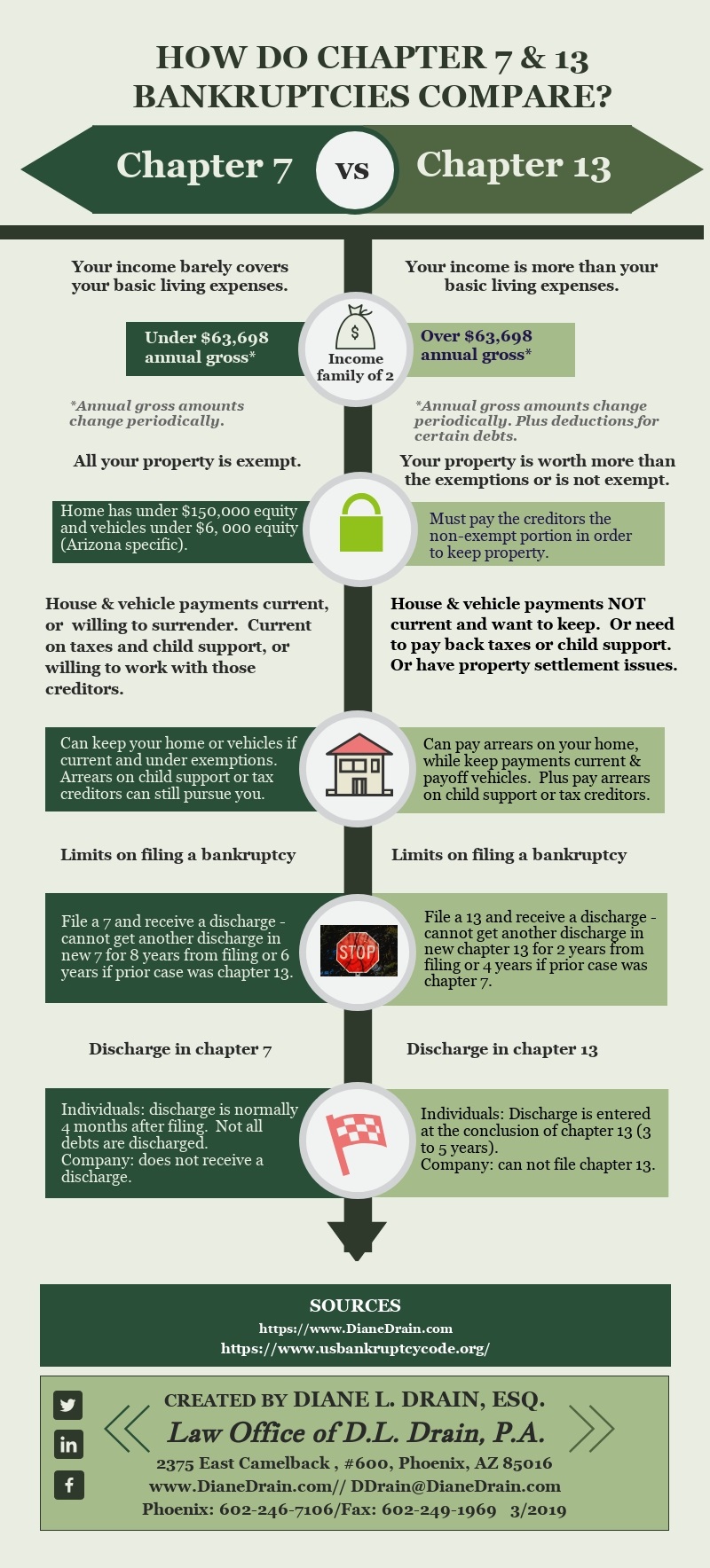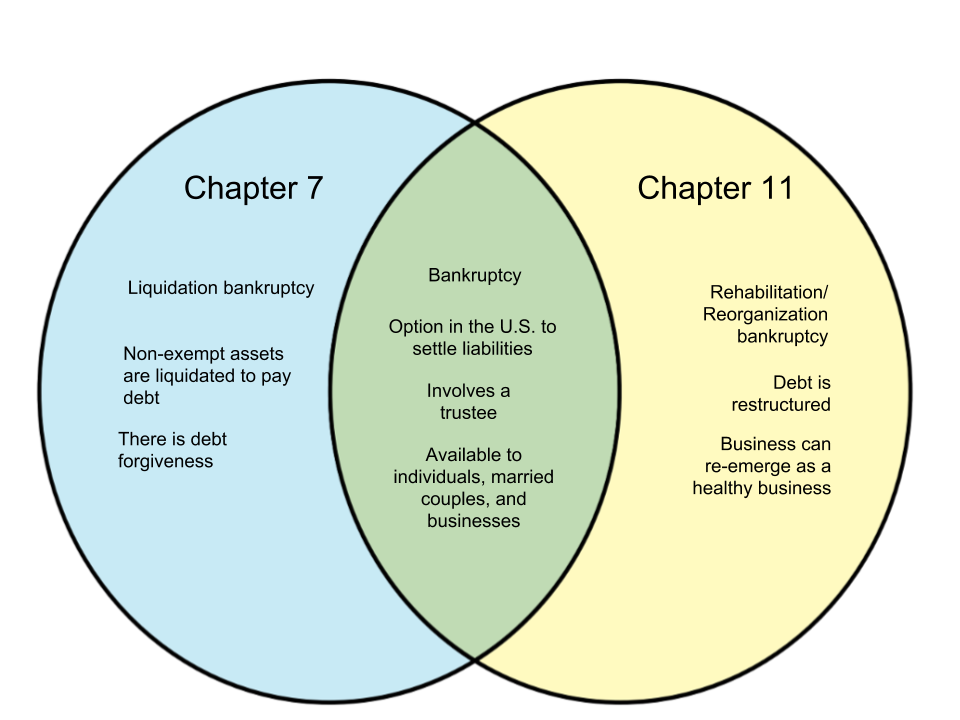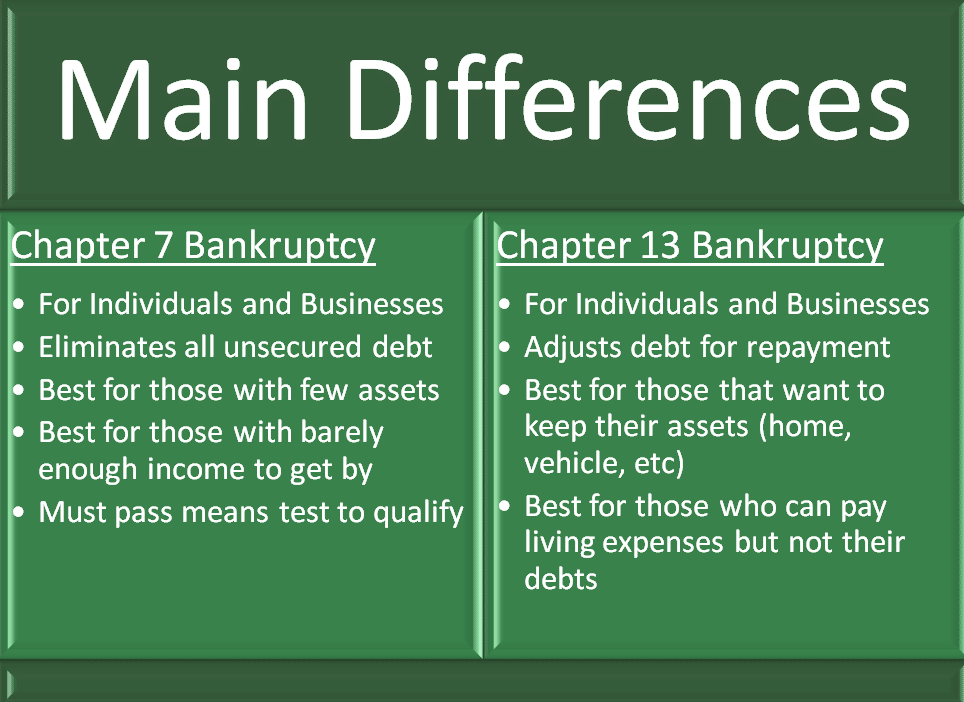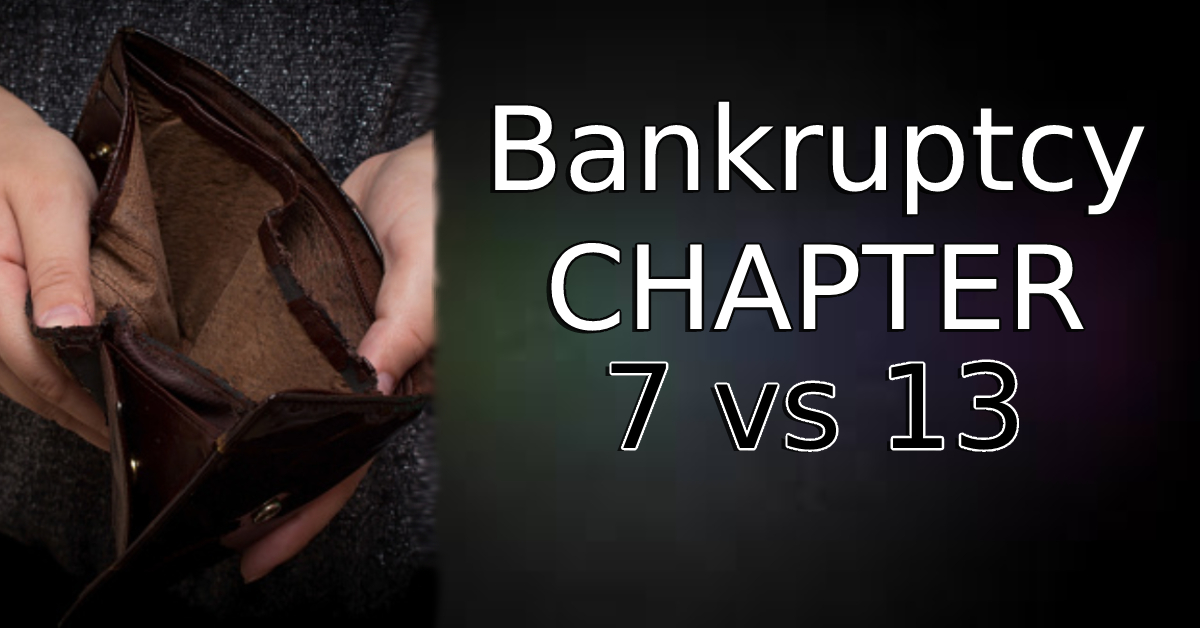Difference Between Chapter 7 11 13
Difference Between Chapter 7 11 13 - Web chapter 7 is the type of bankruptcy that most people imagine when they think of bankruptcy: The plan may call for full or partial repayment. Web what is the difference between bankruptcy cases filed under chapters 7, 11, 12 and 13? Web what is the difference between chapters 7, 11, 12, & 13? Web key takeaways chapter 7 and chapter 11 are two common forms of bankruptcy. The biggest differences between chapter 7 and chapter 13 bankruptcy are what happens to your property and who qualifies financially. Both bankruptcy types allow debtors to stay in business and restructure their finances. In a chapter 7 bankruptcy, the assets of a business are liquidated to pay its creditors, with secured debts taking. With a better understanding of the features, uses, and examples of each chapter… Web the remaining assets and cash left after paying off secured debts are pooled together and allocated to creditors with unsecured debt.
Web there are some notable differences between chapter 11 and chapter 13 bankruptcy, including eligibility, cost, and the amount of time required to complete the process. This chapter of the u.s. Web differences between chapters 7, 11, 12, and 13 bankruptcy. Web one advantage of chapter 13 is it allows individuals to avoid foreclosure on their houses, in contrast to chapter 7. A business may liquidate through the bankruptcy process by filing a petition under either chapter 7 or chapter 11. Rarely businesses — sell their. Web chapter 7 bankruptcy vs. Web key takeaways chapter 7 and chapter 11 are two common forms of bankruptcy. Often called the liquidation chapter, chapter 7 is used by individuals, partnerships, or corporations. Such creditors are shareholders with preferred stock, bondholders, and others.
The key differences essentially amount to liquidation vs. In order from highest to lowest frequency, chapters 7, 13, and 11. It also has specific debt limits. Web what is the difference between chapter 7, 11, 12 & 13 cases? This chapter of the u.s. Chapter 7 bankruptcy liquidation bankruptcy for individuals. Sometimes referred to as “straight bankruptcy”, in chapter 7 bankruptcy, the. Such creditors are shareholders with preferred stock, bondholders, and others. This is a liquidation bankruptcy, sometimes called “straight. Corporations cannot file under chapter 13 of the bankruptcy code.
What's the Difference Between a Chapter 7 and 13 Bankruptcy?
The plan may call for full or partial repayment. Web what is the difference between filing bankruptcy under chapter 7, under chapter 13, and under chapter 11 of the bankruptcy code? Web explore the key differences between chapter 7, chapter 11, and chapter 13 bankruptcy filings and learn how to choose the right option for your unique financial situation. Web.
Difference Between Chapter 7 and 13 Diane L. Drain Phoenix Arizona
Web differences between chapters 7, 11, 12, and 13 bankruptcy. Web february 04, 2021 the u.s. Web key takeaways chapter 7 and chapter 11 are two common forms of bankruptcy. Such creditors are shareholders with preferred stock, bondholders, and others. Web chapter 13 enables individuals with regular incomes, under court supervision and protection, to repay their debts over an extended.
The Difference Between Chapter 7 & Chapter 13 Bankruptcies
| western district of michigan | united states bankruptcy court. Web chapter 13 enables individuals with regular incomes, under court supervision and protection, to repay their debts over an extended period of time according to a plan. Web key takeaways chapter 7 and chapter 11 are two common forms of bankruptcy. A reorganization and restructuring of debt. Such creditors are.
45+ Difference Between Chapter 7 And Chapter 11
While chapter 11 can be done by almost any individual or business, chapter 13 is reserved for individuals with stable incomes. It also has specific debt limits. The key differences essentially amount to liquidation vs. Corporations cannot file under chapter 13 of the bankruptcy code. Web chapter 13 enables individuals with regular incomes, under court supervision and protection, to repay.
Bankruptcy Chapter 7 vs 13 What is The Difference
This chapter of the u.s. Web the remaining assets and cash left after paying off secured debts are pooled together and allocated to creditors with unsecured debt. Rarely businesses — sell their. A reorganization and restructuring of debt. Web chapter 13 enables individuals with regular incomes, under court supervision and protection, to repay their debts over an extended period of.
What Is The Difference In Chapter 7 And 13 Bankruptcy
Chapter 7 bankruptcy liquidation bankruptcy for individuals. Chapter 15 chapter 15 bankruptcy, added to the u.s. While chapter 11 can be done by almost any individual or business, chapter 13 is reserved for individuals with stable incomes. The approval process for a chapter 13. A reorganization and restructuring of debt.
Chapter 13 Bankruptcy Avondale Bankruptcy Attorneys
While chapter 11 can be done by almost any individual or business, chapter 13 is reserved for individuals with stable incomes. Bankruptcy code is organized into chapters, and several of these chapters refer to different types of bankruptcy. Sometimes referred to as “straight bankruptcy”, in chapter 7 bankruptcy, the. Web what is the difference between bankruptcy cases filed under chapters.
Infographic Chapter 7 vs. Chapter 13 BankruptcyWeaver Bankruptcy Law Firm
Web explore the key differences between chapter 7, chapter 11, and chapter 13 bankruptcy filings and learn how to choose the right option for your unique financial situation. A reorganization and restructuring of debt. Web chapter 7 bankruptcy and chapter 11 bankruptcy are both common options for businesses in declaring bankruptcy. This is a liquidation bankruptcy, sometimes called “straight. Chapter.
Tampa Bankruptcy Chapter 7 vs Chapter 13 Galewski Law Group
Web what is the difference between chapters 7, 11, 12, & 13? The key differences essentially amount to liquidation vs. Web differences between chapters 7, 11, 12, and 13 bankruptcy. In order from highest to lowest frequency, chapters 7, 13, and 11. Web what is the difference between bankruptcy cases filed under chapters 7, 11, 12 and 13?
moresalesbydesign Chapter 11 Bankruptcy Vs Chapter 13
Web what is the difference between bankruptcy cases filed under chapters 7, 11, 12 and 13? With a better understanding of the features, uses, and examples of each chapter… Web chapter 7 bankruptcy and chapter 11 bankruptcy are both common options for businesses in declaring bankruptcy. Web there are some notable differences between chapter 11 and chapter 13 bankruptcy, including.
In A Chapter 7 Bankruptcy, The Assets Of A Business Are Liquidated To Pay Its Creditors, With Secured Debts Taking.
Bankruptcy code in 2005, provides. With a better understanding of the features, uses, and examples of each chapter… Rarely businesses — sell their. Bankruptcy code is organized into chapters, and several of these chapters refer to different types of bankruptcy.
Web Differences Between Chapters 7, 11, 12, And 13 Bankruptcy.
Corporations cannot file under chapter 13 of the bankruptcy code. The approval process for a chapter 13. Sometimes referred to as “straight bankruptcy”, in chapter 7 bankruptcy, the. Both bankruptcy types allow debtors to stay in business and restructure their finances.
The Biggest Differences Between Chapter 7 And Chapter 13 Bankruptcy Are What Happens To Your Property And Who Qualifies Financially.
Web what is the difference between chapter 7, 11, 12 & 13 cases? Web february 04, 2021 the u.s. This is a liquidation bankruptcy, sometimes called “straight. Web explore the key differences between chapter 7, chapter 11, and chapter 13 bankruptcy filings and learn how to choose the right option for your unique financial situation.
This Chapter Of The U.s.
| western district of michigan | united states bankruptcy court. Such creditors are shareholders with preferred stock, bondholders, and others. Web chapter 13 enables individuals with regular incomes, under court supervision and protection, to repay their debts over an extended period of time according to a plan. In order from highest to lowest frequency, chapters 7, 13, and 11.









